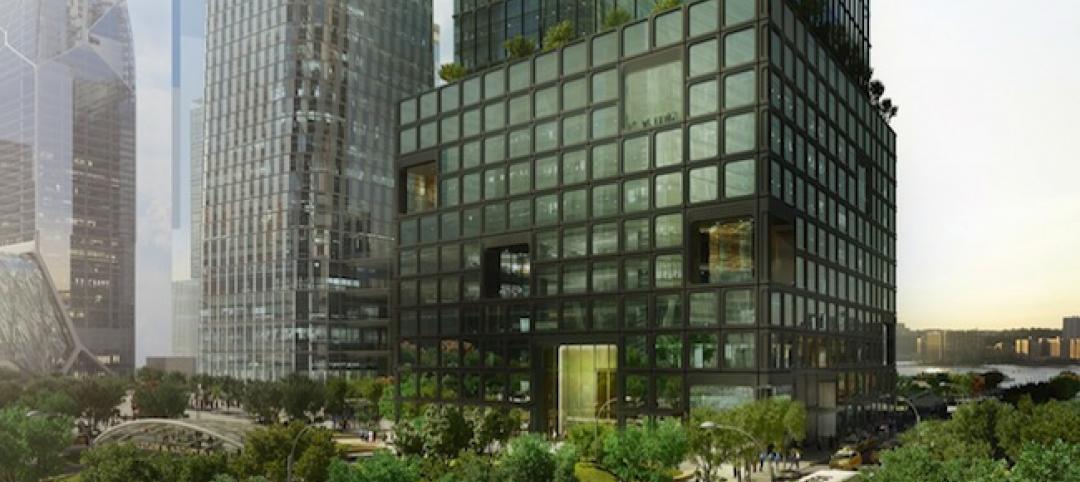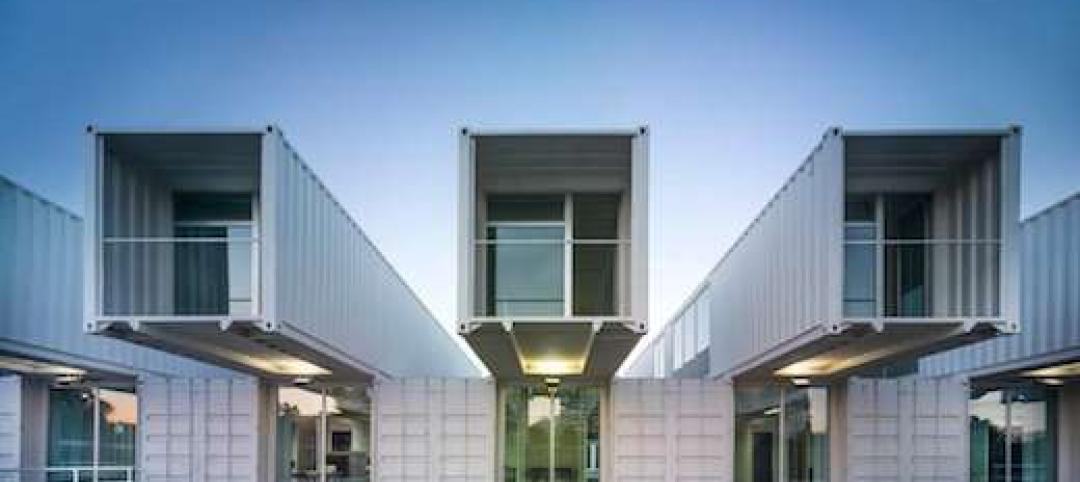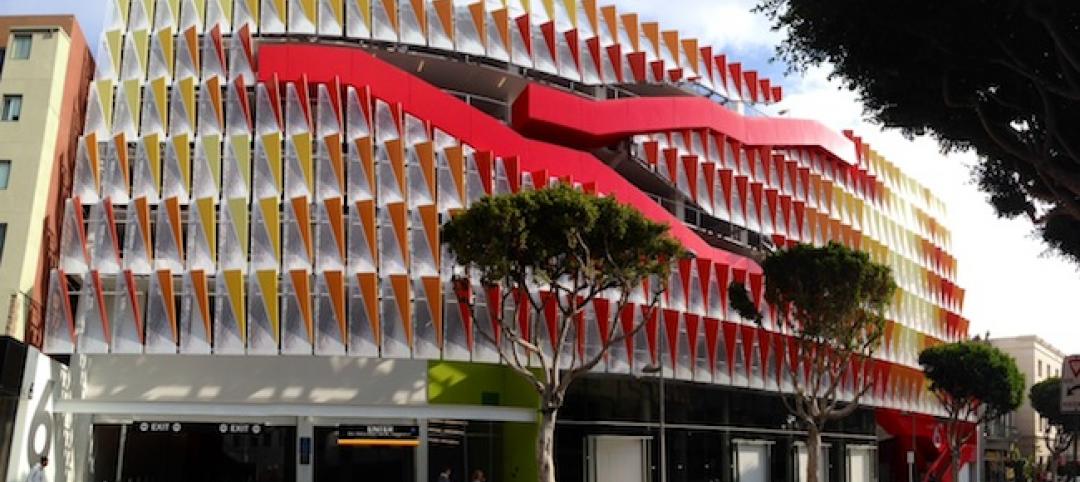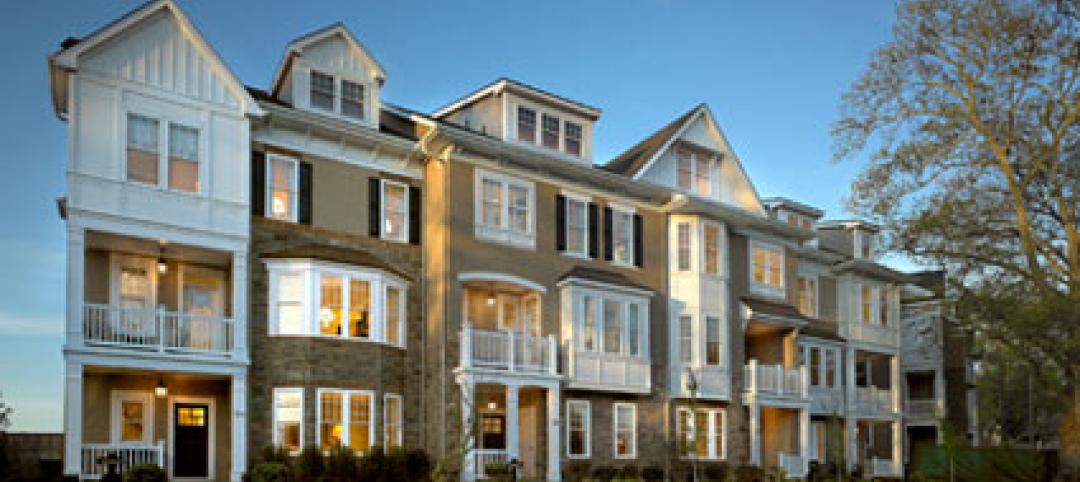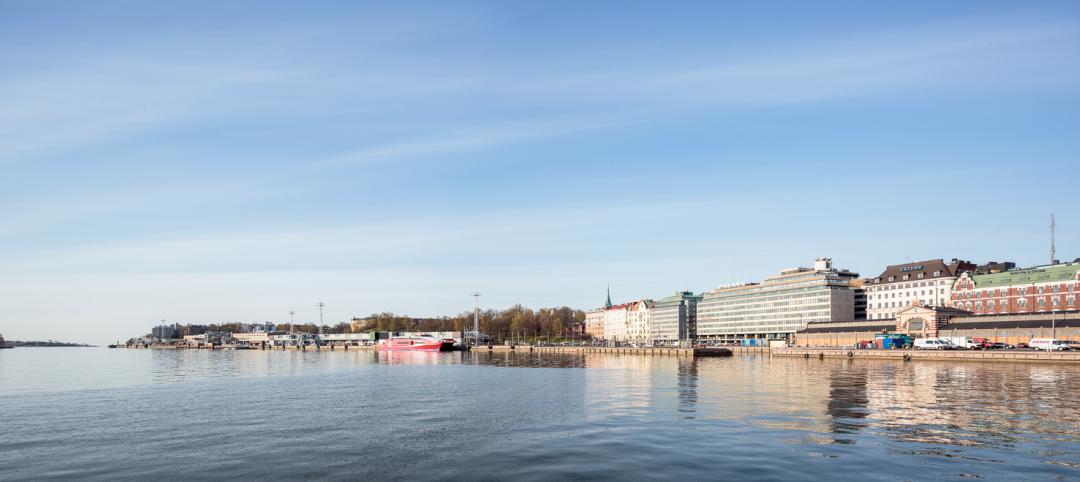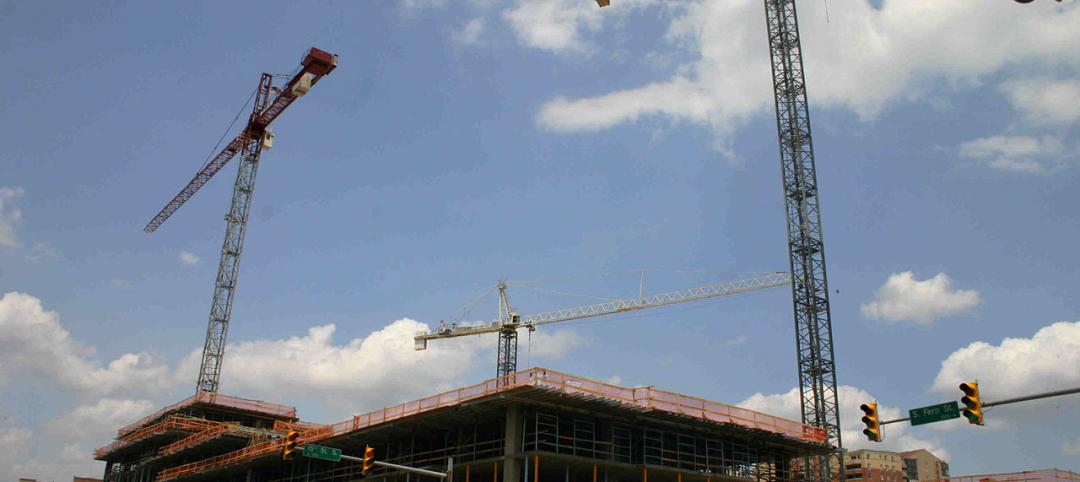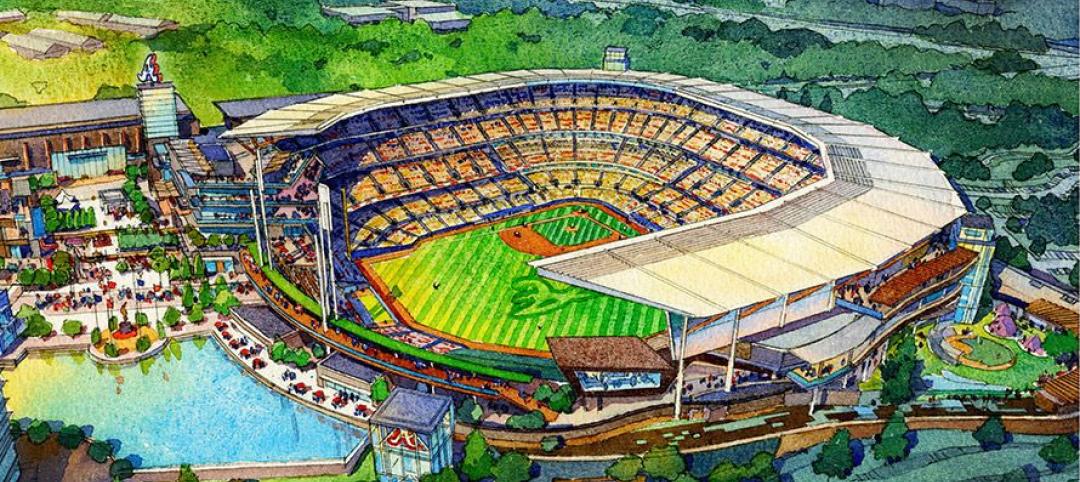Allan Bilka, RA, is a Senior Staff Architect and Secretariat to the International Green Construction Code (IgCC) with the International Code Council, based in the ICC’s Chicago district office. He also serves as staff liaison to the ICC-700 National Green Building Standard. He has written several ICC white papers on green building and numerous green-related articles for the ICC. A registered architect, Bilka has over 30 years of combined residential design/build and commercial consulting engineering experience.
BD+C: What’s the story behind the IgCC?
Allan Bilka: We at ICC first got our feet wet in the green and sustainable world through our involvement with building energy codes, which began in the 1970s and culminated in the International Energy Conservation Code. We then worked with the National Association of Home Builders, at their request, on their ICC 700 National Green Building Standard, as well as the guidelines that preceded it, beginning in 2005. That brought some focus within ICC to strive to work with code officials, manufacturers, architects and designers to provide clarity regarding the relationship of green building rating systems, and sustainability in general, to the codes. IgCC now outwardly promotes the concept of “safe and sustainable” building and is dedicated to producing codes which support that concept.
Rating programs like LEED and Green Globes were written in permissive language, as they were always intended to be applied on voluntary basis. The ICC board and staff determined that a green building code was the only tool that could realistically support the scale and the massive changes that were necessary to move us toward the goal of creating a built environment that is truly sustainable. There was a need for building sustainability requirements to be coordinated with the requirements contained in the Code Council’s family of codes. This had the potential to reduce or eliminate many of the barriers to sustainability, both perceived and real, that the code enforcement, design and construction communities have had to deal with as they have tried to coordinate code requirements with the practices encouraged by green building rating systems.
The IgCC, however, is not intended to replace voluntary rating systems like LEED, but rather to establish minimum mandatory requirements that raise the floor of sustainability for all buildings, both new and existing, other than low-rise [three stories or less] residential buildings that fall under the scope of the International Residential Code. LEED and the IgCC, as well as ASHRAE 189.1 and other green building standards and rating systems, as well as the base codes, have and will continue to push, pull and leapfrog each other as they all move forward toward the goal of producing buildings that have zero negative impact on the natural environment.
BD+C: Where does the IgCC stand at the moment?
AB: In May, IgCC committees reviewed over 1,200 proposed changes at public hearings in Dallas and have recommended certain proposals for approval at the final action hearing in Phoenix [November 2-6]. Public comments were accepted through August 12 and will be considered at the public hearings in Phoenix. The results of those final action hearings will determine the content of the 2012 IgCC.
One of the key committee recommendations is that whole building life cycle assessment will no longer be a project elective, but will now be an option to other mandatory provisions in the code. Also, service life requirements were taken out of the mandatory provisions, although they remain as a project elective.
With regard to energy, building envelope thermal and fenestration performance was ramped up 10% over the requirements of the 2012 International Energy Conservation code (IECC). IgCC Public Version 2 required energy performance that was approximately 30% better than the 2006 IECC, and these thermal envelope requirements, as well as other new requirements, will push its minimum energy performance even higher.
BD+C: Table 302.1 lists 22 choices that jurisdictions can make to reach higher levels of stringency. How will this system work?
AB: Table 302.1 is a set of requirements that the jurisdiction can choose to implement on a mandatory basis, which would then be applicable to all buildings in that jurisdiction. For example, a jurisdiction could choose to mandate ASHRAE 189.1 in place of the requirements in Chapter 4-10 of the IgCC. Eighty-five to 90% of the provisions in the IgCC are mandatory, but the other 10-15% are elective choices tied to the tables in Chapter 3. Table 302.1 contains provisions that may not be appropriate for some jurisdictions, but quite appropriate for others. These are choices the jurisdiction must make based on its regional environmental goals. Jurisdictions can increase minimum energy or water performance requirements, or restrict building in greenfields and floodplains, as they feel appropriate.
BD+C: Table 303.1 gives building owners and their design teams 52 project electives to choose from. What’s the thinking here?
AB: Table 303.1 is intended to encourage sustainable practices that are difficult or impossible to mandate—for example, building on a brownfield. It’s not appropriate to require building on brownfields, but it is appropriate to encouragebuilding on brownfield sites, when feasible. These 52 project electives list sustainability-related concepts that building owners and their design teams can consider as applicable to their projects. For example, you could achieve 10 electives by building a net-zero energy project, but would not be required to do so, as other electives are also available. Also, where a jurisdiction does not mandate a practice in Table 302.1, it becomes available as a project elective in Table 303.1, meaning that the practice is still encourage, though not mandated.
BD+C: How many project electives will owners and design teams be required to implement?
AB: That’s up to the individual jurisdiction. In Table 302.1, the jurisdiction must select a number between 1 and 14 as the number of project electives that building owners and their design teams must select from Table 303.1. The actual project electives implemented will vary from project to project.
BD+C: At a panel you presided over at the AIA conference in May, the question was raised as to whether the IgCC will tax already burdened local code enforcement officials. Will it?
AB: Simply adopting this green code is not enough. We have to make sure that it’s enforced, which is the job of architects and designers of good conscience, and code officials as well. There will be a learning curve, but we can educate each other and continue to move forward.
The IgCC certainly will create more work for code officials and for architects. We can’t skirt that issue. But code officials are the most cost-effective group to tackle this, because they’re already on the job reviewing construction documents and inspecting to ensure proper installation in the field. They’re the most cost-effective, but it’s still going to be added time, no question. There will be added costs, we have to face that, and we have to support code officials to give them the time and funding required to do their jobs. However, there will come a time when many of these considerations become second nature for most projects, and the man-hours required for code officials, designers and contractors should fall back from their peaks at the beginning of the learning curve.
BD+C: What are the next steps for the IgCC?
AB: The 2012 edition of the IgCC is scheduled to be available next March [2012]. IgCC Public Versions 1.0 or 2.0 have already been adopted by Rhode Island and Florida (as an option for state-owned buildings only), Maryland and Oregon (via its Reach Code), and by several cities: Boynton Beach, Fla.; Richland, Wash.; and Phoenix, Scottsdale, and Kayenta Township, Ariz. In addition, Fort Collins, Colo. used significant extractions from the IgCC, and it is an “allowable green building system” in Keene, New Hampshire’s Sustainable Energy Efficient Development Zone.
The IgCC is something completely new in the codes arena, and though we have a tough economic climate, I have high hopes that we will continue to see a fairly significant number of voluntary adoptions. Such adoptions would not require implementation by the private sector, so there is no economic hardship unless building owners voluntarily decide to take it on. And owners have, and are likely to continue to take on those burdens, because being able to market themselves as green and sustainable has proven payback. Even where the IgCC is adopted on a voluntary basis, it allows all involved in the construction industry, as well as consumers and the public, to become familiar with green and sustainable building at their own pace. Many initial fears will thus be subdued. This will open the door to mandatory adoptions which will, someday, become commonplace.
A code must be real. It must take the concepts of sustainability pioneered in rating systems like LEED mold them into a new set of criteria that can be applied reasonably and realistically, with full consideration of the marketplace, the economy, the available technologies and the environmental costs and benefits of each. It is one thing to create a wide array of practices and simply let owners and designers choose from them, as rating systems do, and it is another, much more difficult game, when mandatory codes are used to spell out required minimum compliance. The IGCC is intended to be adopted on a mandatory basis to drive green building into everyday practice, but it must be a document that jurisdictions will not be hesitant to adopt, and it must be both easy to use and environmentally beneficial. We have quite a way to go to reach the goal of producing a built environment that is not only safe, but sustainable, and the IgCC is just the type of tool we need to ensure that we will get there.
For more on the IGCC, go to: http://www.iccsafe.org/cs/IGCC. BD+C
Related Stories
| Jun 6, 2014
Must see: Can a floating city offset urban population growth in China?
AT Design Office has proposed a design for a floating city to offset increasing urban populations in China. To create the new city, a 10-square kilometer island would be made out of prefab blocks.
| Jun 6, 2014
KPF, Kevin Roche unveil design for 51-story Hudson Yards tower in NYC [slideshow]
Related Companies and Oxford Properties Group are teaming to develop Fifty Five Hudson Yards, the latest addition to the commercial office tower collection in the 28-acre Hudson Yards development—the largest private real estate development in the history of the U.S.
| Jun 6, 2014
Shipping container ship terminal completed in Spain
In Seville, Spain, architectural firms Hombre de Piedra and Buró4 have designed and completed a cruise ship terminal out of used shipping containers.
| Jun 5, 2014
International Parking Institute names best new parking structures
Winners include garages that are architectural delights, an airport's canopied parking atrium, and an environmentally friendly garage under America's oldest park.
| Jun 4, 2014
Emerging trends in healthcare development: neighborhood care, mixed-use models on the rise
In urban and even suburban markets, real estate is about the "live, work, play," with close proximity to mass transit and other amenities, like retail stores. Healthcare organizations are following suit.
| Jun 4, 2014
Want to design a Guggenheim? Foundation launches open competition for proposed Helsinki museum
This is the first time the Guggenheim Foundation has sought a design through an open competition. Anonymous submissions for stage one of the competition are due September 10, 2014.
| Jun 4, 2014
Market update: A difficult first quarter for construction spending comes to an end
This year's unusually difficult winter took its toll on construction activity. Nonetheless, first quarter spending for all the major groups was up compared to the same period in 2013.
| Jun 4, 2014
Construction team named for Atlanta Braves ballpark
A joint venture between Barton Malow, Brasfield & Gorrie, Mortenson Construction, and New South Construction will build the Atlanta Braves ballpark, which is scheduled to open in early 2017. Check out the latest renderings of the plan.
| Jun 3, 2014
Must see: World's tallest LEGO tower built in Budapest
The tower, built in front of St. Stephen's Basilica, is topped with a Rubik's cube and was built using thousands of blocks.
| Jun 3, 2014
Great leadership comes down to one thing
While it’s often said that strong leadership is an organization’s competitive advantage, is there a single characteristic that can predict which leaders will be most effective? SPONSORED CONTENT




